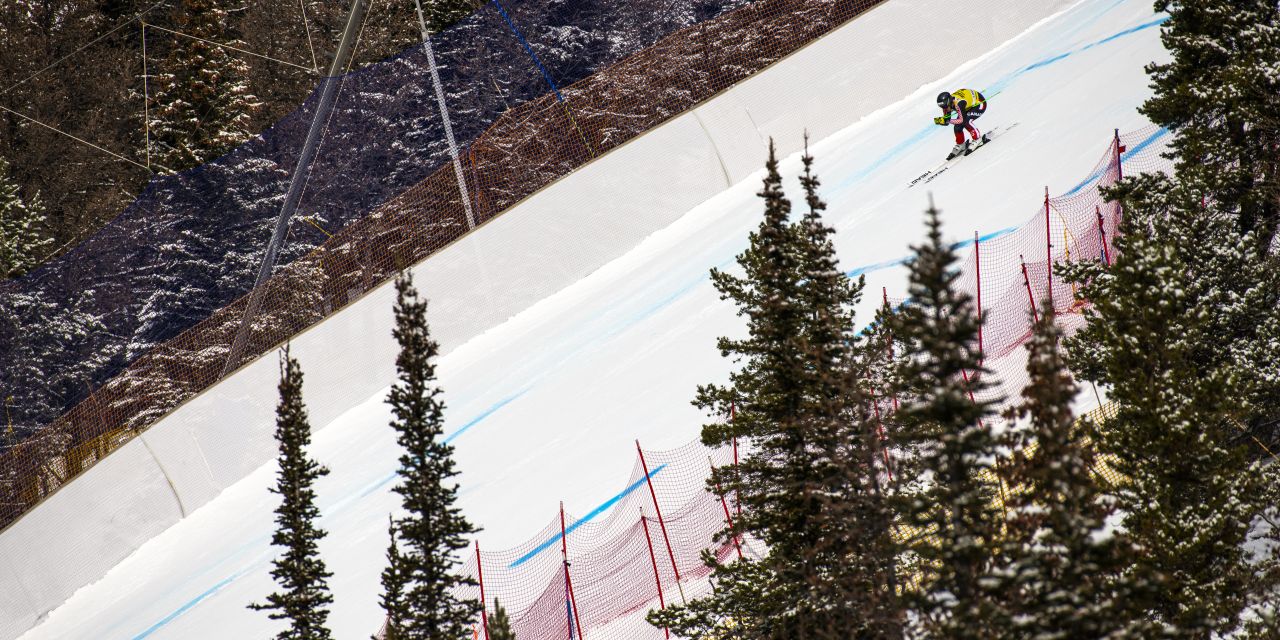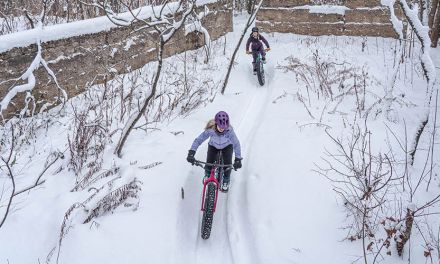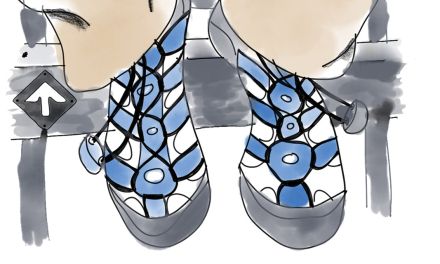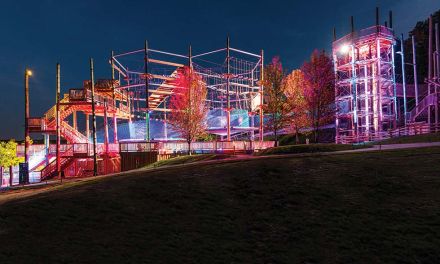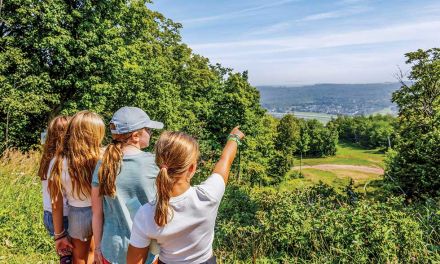The Last Rodeo?
Words by Cara Williams, photography by Clay Dolan
When rumours began circulating that this season’s Lake Louise Alpine Ski World Cup would be the last, I was determined to find out if the tales were true. I booked a flight to Calgary, grabbed my skis, donned my cowboy hat, and headed to one of my favourite places in the Canadian Rockies.
Lake Louise is as quaint, unhurried and unpretentious a place as you’ll find anywhere—which is probably why it’s been a favourite among World Cup athletes for over three decades. It had been nearly 20 years since I stood in the finish area and watched the fastest ski racers in the world navigate the legendary track at Lake Louise. An adrenaline-pumping, nearly month-long event with races in two categories (downhill and super-G), Lake Louise Ski Resort is (has been?) the first stop in North America for years. The only World Cup stop in Canada, it is one of the select few venues that holds both men’s and women’s races. The three-kilometre course is descended in about a minute and a half, with athletes reaching speeds up to 130 km/h. It’s hairy, scary and over the years this track has racked up dozens of nauseating highlight-reel-worthy crashes. After standing on the podium here, athletes are welcomed into an elite club. In addition to prize money, vases and flowers, each medallist gets an iconic white cowboy hat from Banff Western Outfitters—a tradition as steep as the World Cup track. While the race is broadcast globally to 174 million viewers, it’s free to watch from the finish area. And you don’t even need to buy a lift ticket.
Before I go any further, I’ll be upfront with what I discovered; the future is… cloudy. Alpine Canada Alpin (ACA) has not confirmed Lake Louise as a future World Cup host beyond 2022/23, and the Fédération internationale de ski (FIS) has yet to release the World Cup calendar for 2023/24. So, as I watched the last athlete push out of the start gate, surrounded by the rugged beauty of Banff National Park, I reflected on the tremendous impact that this event has had on the sport of ski racing in Canada. And what it might mean if this truly is, the last rodeo.

One thing is certain—this magical place is steeped in alpine history. Canada hosted our first ever World Cup ski race on March 4th, 1980, due to the last-minute cancellation of fog- shrouded Chamonix, France. The track, commissioned by the 1968 Banff/Calgary Olympic bid committee, wound down the front face of Lake Louise’s Whitehorn Mountain. It was designed by German-American Wilhelm Josef “Willy” Schaeffler, inventor of the Willy Bag and co-designer of the Dave Murray Downhill in Whistler. While the early Olympic bid was unsuccessful, the track remained—a testament to sport legacy that would prove to be an enormous benefit to Canadian athletes.
According to the late Marc Hodler (president of FIS in 1980), the Lake Louise World Cup organizing committee, and the dozens of dedicated volunteers, delivered so successfully on such short notice, the event was a key step to winning the 1988 Olympic Winter Games bid for Calgary. In total, 16 Canadian men pulled out of the start that initial year, including “Crazy Canucks” Ken Read, Steve Podborski and Dave Murray. Italy’s Herbert Plank, downhill bronze medallist at the 1976 Innsbruck Olympic Winter Games, would win the first ever Lake Louise men’s downhill.

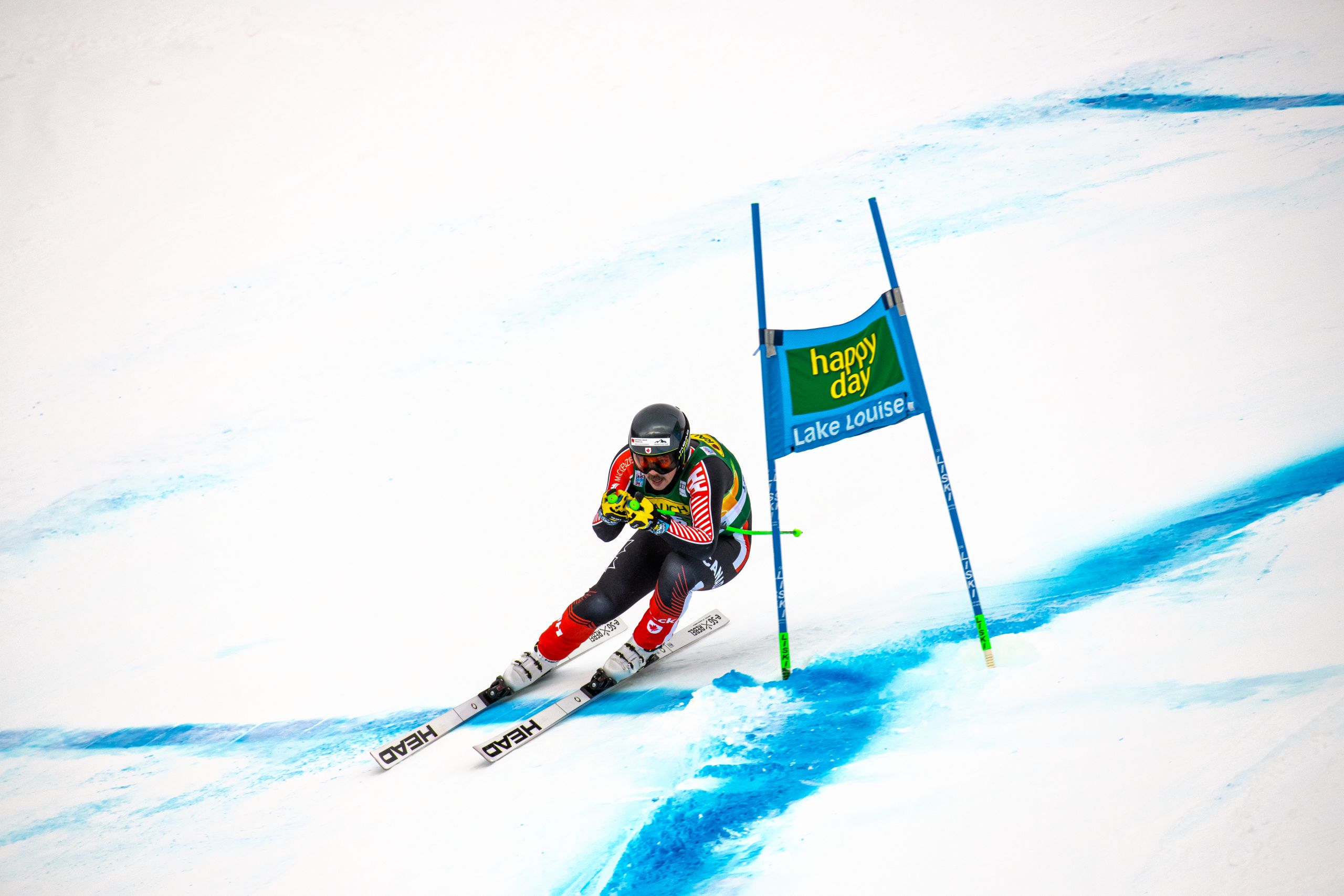
In 1995, the event became an annual part of the women’s World Cup tour and was broadcast to an audience of over a million viewers around the world. The men’s circuit returned in 1999, at which point Lake Louise joined the prestigious Club 5. The first downhill course outside of Europe to do so, it was officially regarded as one of the classic downhill courses in the world alongside Val Gardena, Italy, Kitzbühel, Austria, Garmisch-Partenkirchen, Germany, Val d’Isere, France and Wengen, Switzerland.
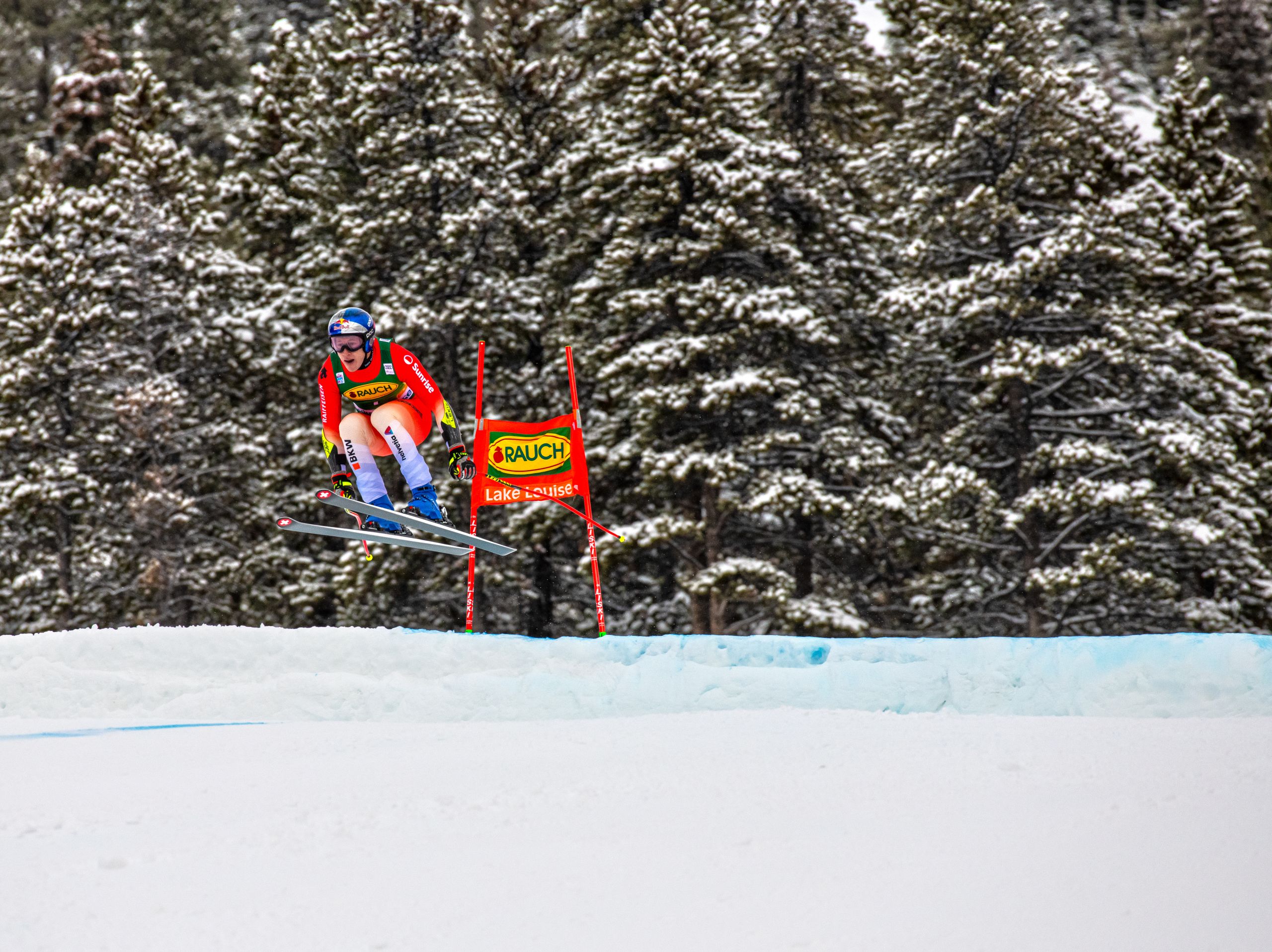
The last time I attended the event was in 2003. Austria’s Michael Walchhofer won the downhill and Mont Tremblant’s Erik Guay took the silver—the top result for a Canadian at Lake Louise and the small but mighty crowd went nuts. By 2010 three additional Canadian men would stand on the podium; Manny Osborne-Paradis (downhill silver, 2006 and super-G gold, 2009); John Kuchera (super-G gold, 2006); and Jan Hudec (downhill gold, 2007). The first Canadian woman to win a medal here was Chicopee Ski Club’s Kelly VanderBeek (super-G bronze, 2006), followed by Whistler’s Britt Janyk (downhill bronze, 2007) and Emily Brydon, who picked up a pair of downhill medals in 2009, winning silver and bronze in consecutive races.
In addition to the world-class venue, Lake Louise has consistently proved its ability to produce race-ready conditions early in the season—something the European resorts have not been able to deliver.
Preparation for the Alberta event began in late October with the building of the race hill, including hundreds of hours of snowmaking, grooming and miles upon miles of netting. The men raced first with two downhills and one super-G, followed by the same schedule for the women. After the last of the teams had departed (the men to Colorado, the women to Europe), the dedicated organizing committee stayed—hosting a week of Nor-Am Cup races on the race-ready track. For young Nor-Am athletes, the experience was as close to an actual World Cup race as you can get. Apart from its early season reliability, Lake Louise is widely considered a favourite tour stop among athletes, due to the laid-back setting and intimate accommodations. The majority of competitors, coaches and techs stay at the luxurious Fairmont Château Lake Louise—the only World Cup venue hotel that can accommodate all international teams in one facility. If you were hoping to run into your favourite racers, you would have likely have found them in the gym, the lobby or playing shinny hockey on the outdoor rink. Italy’s Sofia Goggia (who scored a Lake Louise hat trick last season—only the third woman in history to do so) likened staying at the Château to “waking up in a fairy tale.” Lindsey Vonn has perhaps been the most vocal about her love of the Lake—at the peak of her career, she announced her desire to compete in the men’s event in 2012. This didn’t happen for various reasons, but Lindsey remained the “Queen of Louise”, celebrating a record 18 of her 82 World Cup victories here. In 2018 Lake Louise Resort announced the renaming of a section of the downhill, “Lake Lindsey Way”.
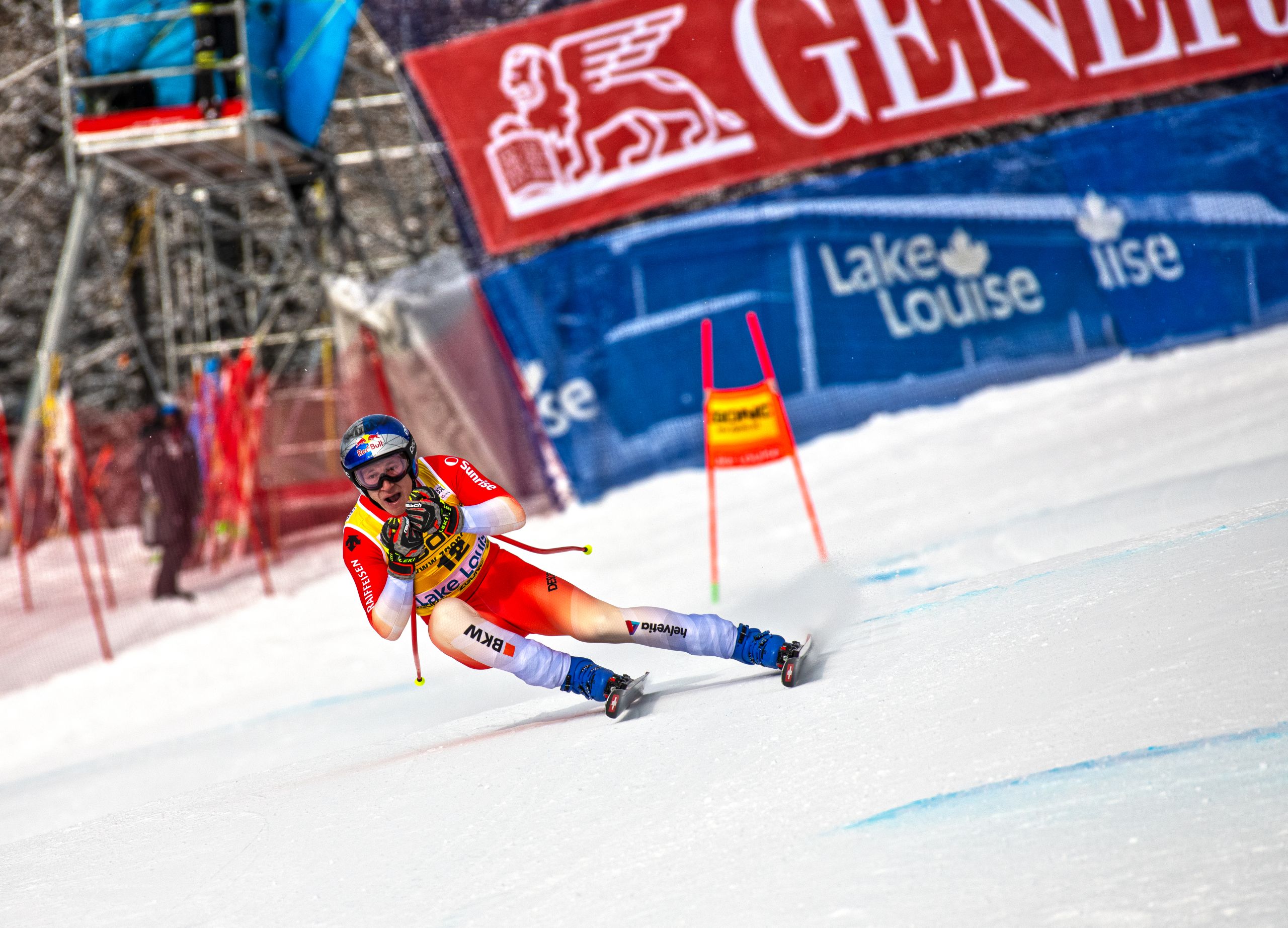
We bunked at the historic five-star Post Hotel and Spa which is as close to living in a Hallmark movie as you can get. Nestled in the heart of Banff National Park, with the spectacular Rockies as a backdrop, the Post Hotel is often the accommodation of choice for athlete’s friends and family. Its signature red roof and hand-hewn walls were built with logs sourced from the headwaters of the Bow River, which meanders past the hotel and cottages. The lobby is lit with antler chandeliers, rich wood walls are adorned with Canadiana artwork, and massive trophies of moose, bison and elk hang above the Riverstone fireplaces. And at the end of a long day on the slopes, the Temple Mountain Spa pools offer relaxation for those those tired legs.
It’s hard to say what will happen to the small businesses, boutique hotels and restaurants in the hamlet of Lake Louise. Next autumn the women’s speed World Cup will be replaced by the recently announced 2023 women’s Alpine Ski World Cup giant slalom races at Mont-Tremblant, Quebec. I say “replaced” but I’m not sure that is entirely accurate—the Quebec races will take place on what would be the same weekend as the women’s races in Lake Louise… so, I imagine that counts as a strike against Alberta retaining the event in the future.
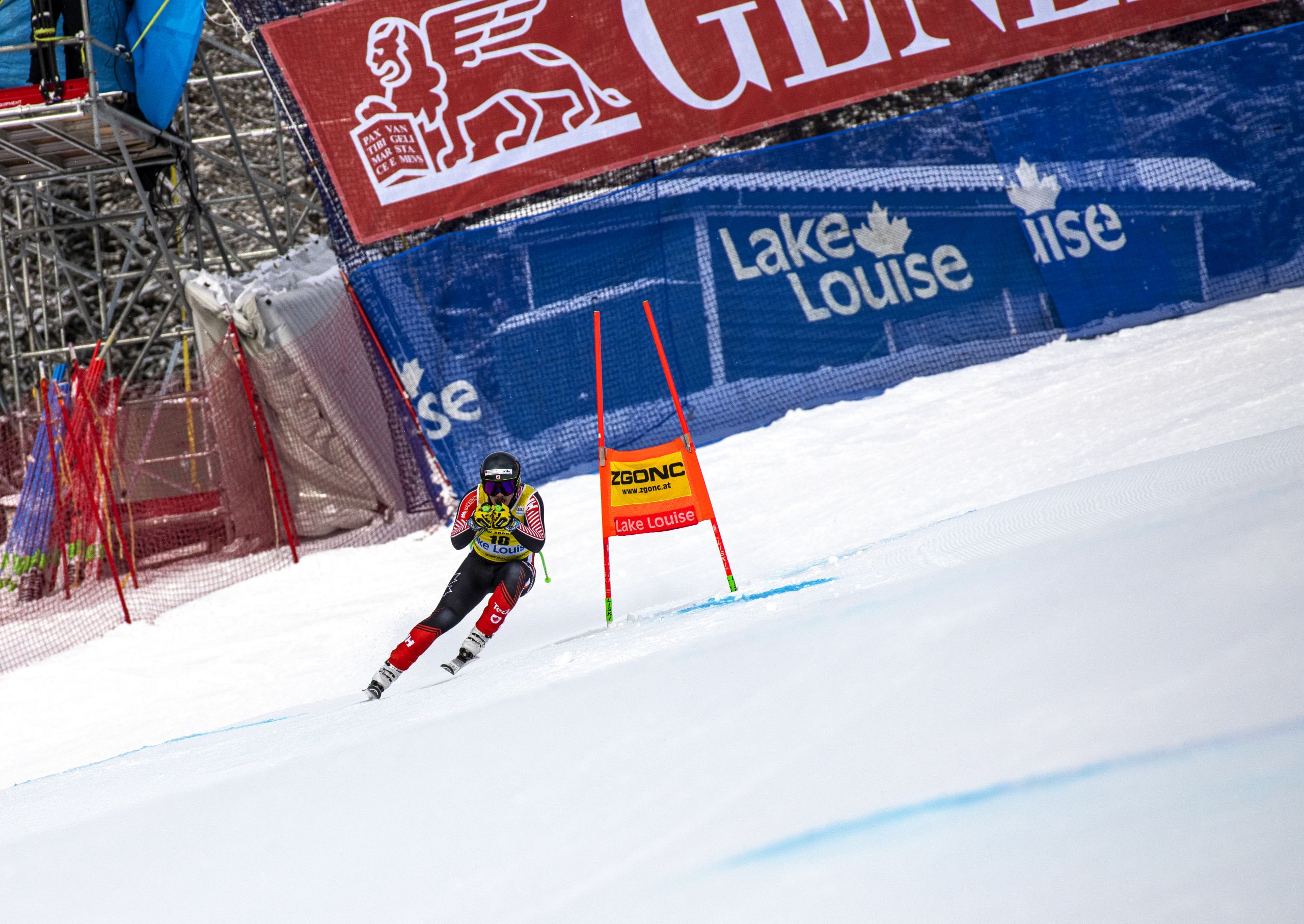
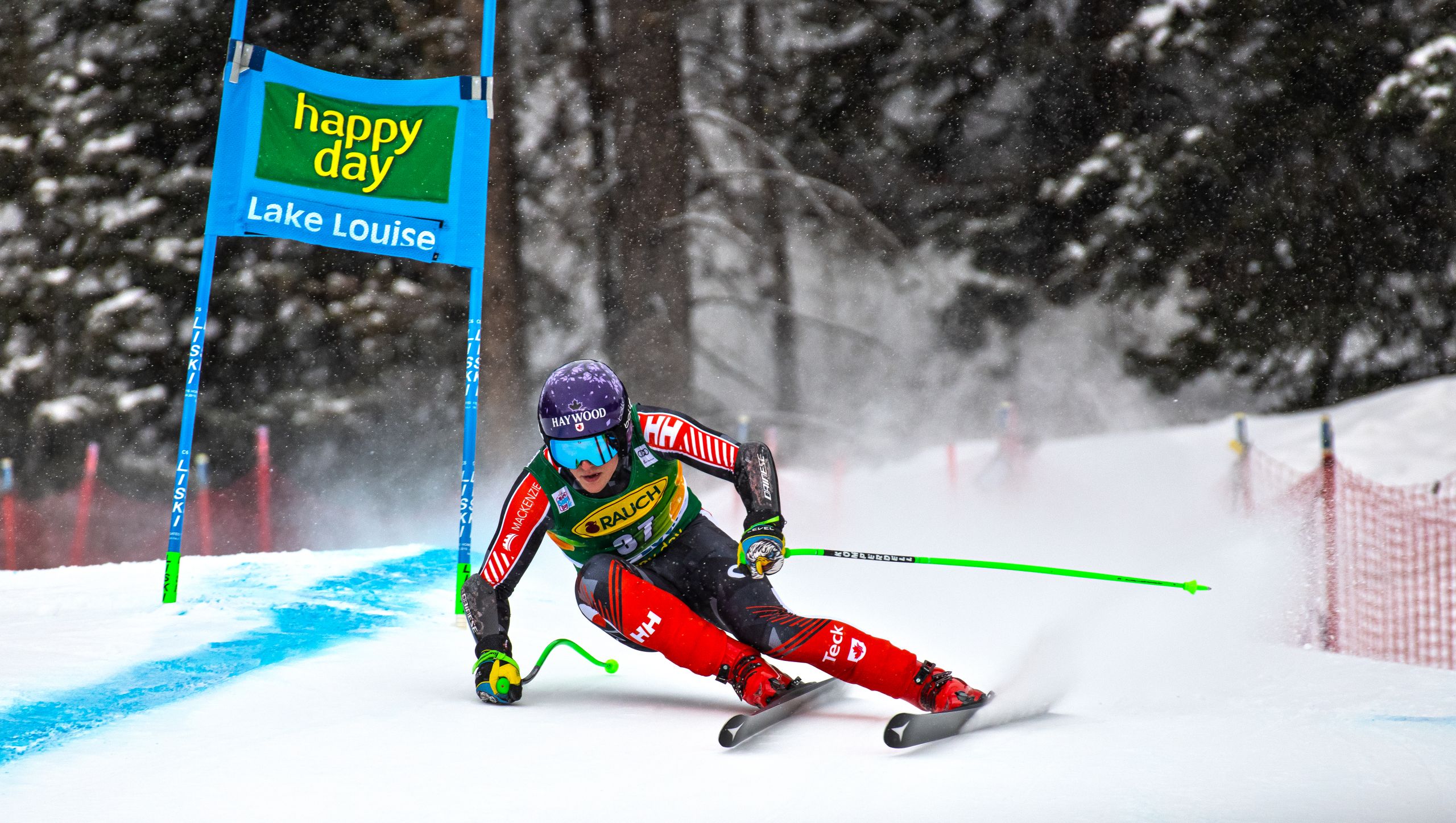
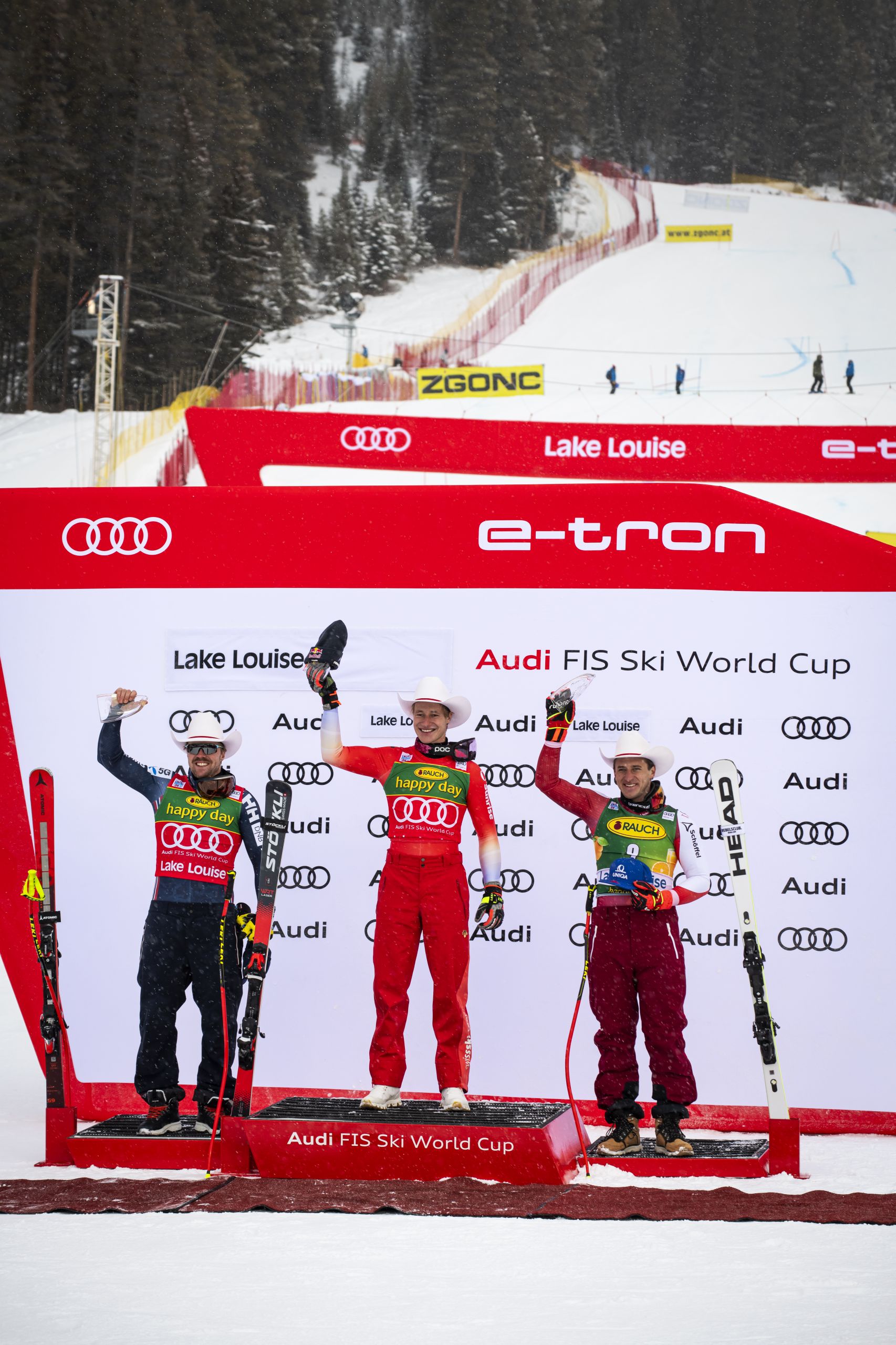
As the lone Canadian stop on the circuit, this is where the majority of Canadian downhillers cut their World Cup teeth. Jack Crawford, who grew up ski racing at Georgian Peaks, scored his first World Cup points here and credits the experience with familiarizing him to life on the tour. “The best part is being able to compete in front of a hometown crowd,” said Jack. “It’s been a place that’s been a huge part of my career.” Jack was the fastest among 82 starters in the first training run this season, but a mistake in the downhill race cost him. He finished 10th in the super-G and went on to win a bronze at the Birds of Prey downhill in Beaver Creek, Colorado the next week.
While Lake Louise doesn’t draw the large crowds of European events, it’s an invaluable experience for the next generation of Canadian skiers. A group of lucky U16 ski racers from the Escarpment were in the crowd to cheer-on their heroes. After spending two weeks training at Panorama Mountain Resort, the group was treated to the VIP World Cup experience thanks to camp organizer and coach Manny Osborne-Paradis. “This is the first World Cup I’ve seen in Canada,” said 15-year-old Ben White from Georgian Peaks. “It’s super cool to see all the Canadian racers at home, and knowing that they’ve gone through the same program that I’ve gone through.” With Manny’s celebrity status, the athletes had unparalleled access to the race, including the rare opportunity to pull out of the start gate, inspect the course and rub elbows with the racers in the hospitality tent. But while the boisterous finish crowd was in top form, there was an underlying feeling of finality and nostalgia—evidently a reaction to the possibility that this may very well have been Louise’s last hurrah.
I caught up with American Travis Ganong after the super-G; “It’s pretty sad that that was my last run on the track,” said Travis, who has a vested interest in North American ski racing; he’s engaged to Canadian downhiller Marie-Michèle Gagnon.
“I don’t really know what’s going to happen next. It’s a shame. We need to have speed races in Canada. As soon as speed races are gone from Canada it’s going to hurt the whole country. Luckily, we still have Beaver Creek, which will keep the culture alive in North America, but once a speed race is gone it’s really hard to get it back. It’s unfortunate, but hopefully this will wake people up, get them fired up, and we’ll get it back.”
Moments after speaking with Travis, I tracked down President and CEO of ACA, Therese Brisson. Seeking clarity, I asked the question on everyone’s mind; what’s next? “We’re committed to having a men’s speed race in the west and we’re looking at a number of venues, including Lake Louise,” said Therese. “We have a lot of work to do to have this race deliver on our objectives, which are pretty simple. First of all, the race needs to grow the sport and grow fans. Secondly, it absolutely needs to be an amazing experience for fans and the athletes. And, we need to have an event that is commercially and environmentally sustainable. Finally, it needs to leave a legacy for the sport, for the community, for the resort, including driving revenue that can be reinvested back into sport development. We don’t meet any of those objectives today, with this event. So, we aspire to innovate and transform so that we do. But we’re absolutely committed to having World Cup race in the west for men’s speed.”
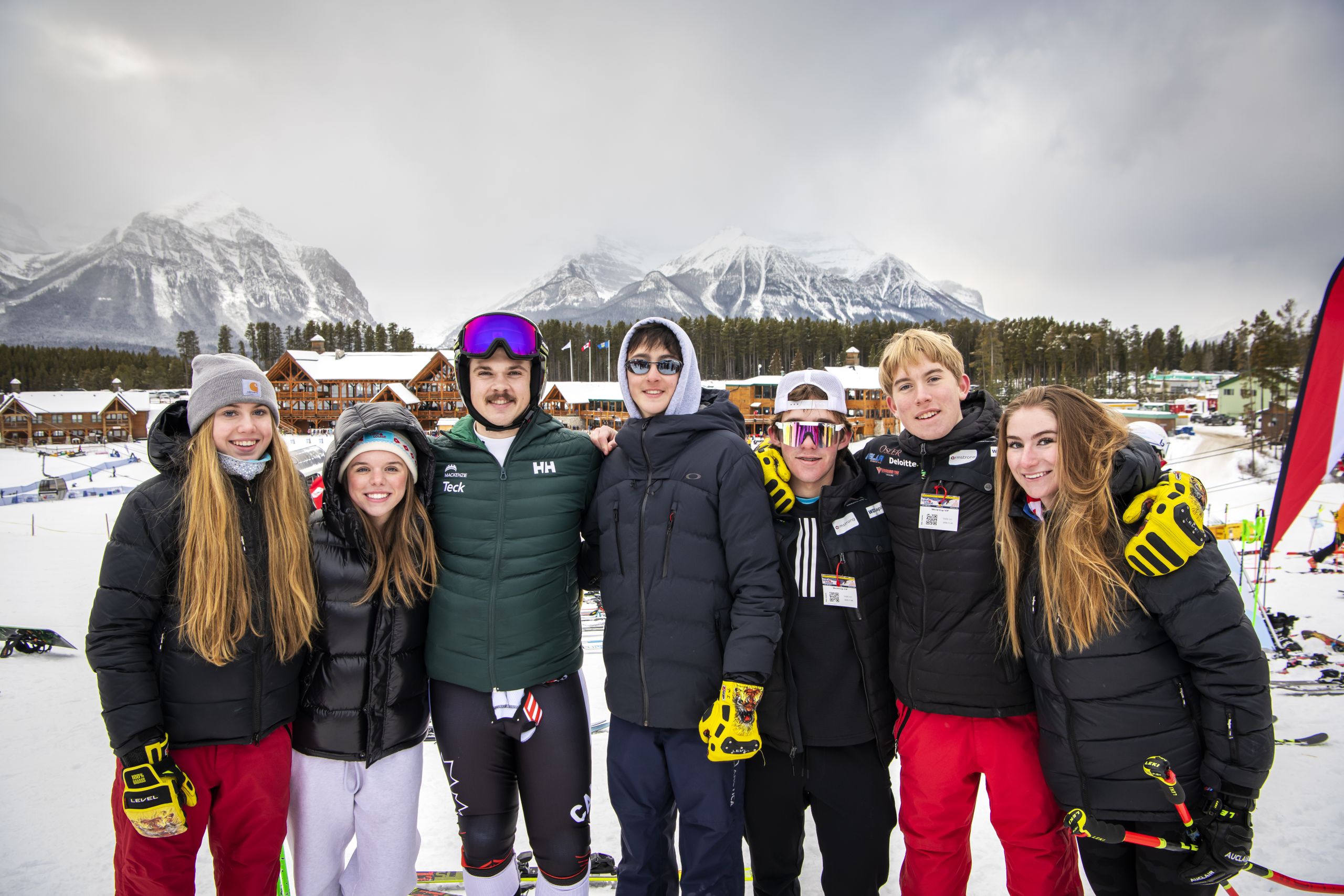
I heard from a few sources that several Canadian resorts are “keen to host World Cup events”, with Panorama and Whistler resorts churning the rumour mill. But who knows—at this point, no decision has been made—a tough blow for the army of remarkable organizers and volunteers. Led by the “Sled Dogs” and “Net Monkeys” the event is a point of pride for those who work tirelessly for weeks; from the beginning of the men’s World Cup to the last day of the Nor-Am Cup.
Whether or not this was Canada’s speed swan song, the athletes certainly put on a show. On the men’s side Norway’s Aleksander Aamodt Kilde and Switzerland’s Marco Odermatt continued their friendly rivalry for supremacy with two podiums apiece (the first downhill was cancelled due to poor visibility). Kilde won gold in the downhill and silver in the super-G, while Odermatt took bronze in the downhill and gold in the super-G. On the women’s side Sofia Goggia earned her fourth and fifth cowboy hats, winning both downhills. Cornelia Huetter of Austria took a bronze in the first downhill and a silver in the super-G, while Switzerland’s Corinne Sutter walked away with medals in every colour—bronze and silver in the downhills and gold in the super-G. This likely means she will be the last woman to win in “The Lake” for the foreseeable future.
While I hold out hope that ACA will find a home-soil alternative, there is no doubt that if this was indeed its final World Cup chapter, Lake Louise will be deeply missed. This legendary course has tested the limits of the world’s best ski racers for three decades. Cheers Lake Louise—here’s hoping that this season’s events weren’t the last chapter in your World Cup book.

